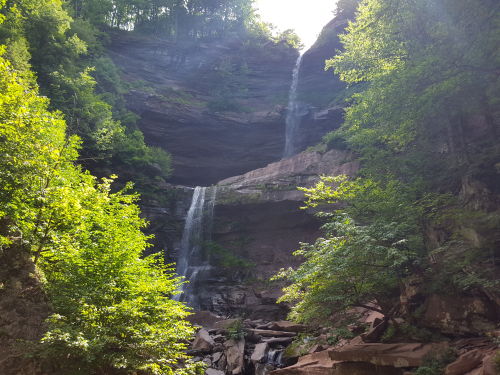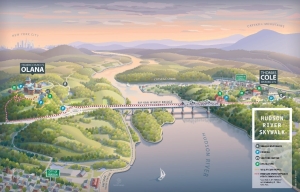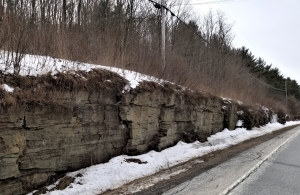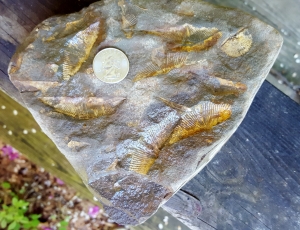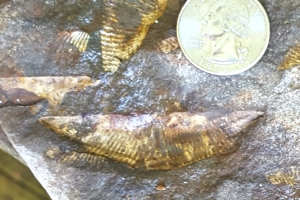An Ice Age Torrent. Apr. 4. 2-24
An ice age torrent – and you can see it
The Catskill Geologists; The Mountain Eagle; June 8, 2018
Robert and Johanna Titus
We have long enjoyed joining in on the hikes sponsored by the Mountain Top Historical Society. This Saturday (2018) there will be one that takes its participants right into the thick of an ice age meltwater torrent. If that sounds like fun then you might consider coming along. The hike will trace the path of what is called the Horse Trail; it can also be called the Harding Road Trail. It ascends from the bottom of Kaaterskill Clove to near the top of South Mountain. It was put together in the 1880’s to bring guests up to the then newly built Hotel Kaaterskill.
The story of the Hotel Kaaterskill is an oft told tale. George Harding had been a long-time guest at the famed Catskill Mountain House, but then there had been an acrimonious argument between him and Mountain House owner Charles Beach. Beach told Harding that if he didn’t like the Mountain House then he should build his own hotel. Harding was a very wealthy man and he did just that; his hotel would be just across South Mountain from the Mountain House. He needed a road to bring guests to his hotel and that was the improbable origin of the Harding Road Trail.
The Harding Road Trail follows a zigzagging path up the south slopes of South Mountain. Take a look at the small, dashed line near the bottom of our map. Our hike will follow the trail and ascend about 1,700 feet before we get to the top. It is billed as a 7.6-mile hike and rated as moderate in difficulty.
But what about that ice age torrent? Well, that will require a little use of the mind’s eye. Can you read a topographic map? Well, once again take a look at our illustration. Our trek will cross a relatively small canyon at an elevation of about 1,400 feet. It has a small stream in it (see the blue line). If you trace the vee-shaped contour lines then you can follow this canyon all the way up to an elevation of about 2,400 feet. But the canyon is mapped as being dry most of the way to the top. It wasn’t always like that. We did an article in Kaatskill Life many years ago about this canyon. We reckoned that it had been an active and powerful torrent of glacial meltwater toward the end of the Ice Age. We are guessing that all of the Hudson Valley, along with Kaaterskill Clove was, at that time, still filled with ice. We see all of the North Lake vicinity and all of North Point and South Mountain as rising above the ice.
There is a lot to the story that we don’t know. We are guessing that there was some sort of ice dammed lake at the top of South Mountain way back then, a larger version of North and South Lakes. But we have not been able to find much physical evidence for the shores of this lake. That remains a mystery.
Our stream was thus a subglacial one. Water from that lake plunged down a hole in the ice, a glacial feature called a Moulin. It’s quite something to imagine. Raging, foaming, pounding, thundering torrents flowed down the subglacial tunnel. It must have been loud, but its sounds were all but muffled in the complete darkness beneath the ice. And our hike will, spiritually, pass through the flow.
Contact the authors at randjtitus@prodigy.net. Join their facebook page “The Catskill Geologist.” Read their blogs at “thecatskillgeologist.com.”
